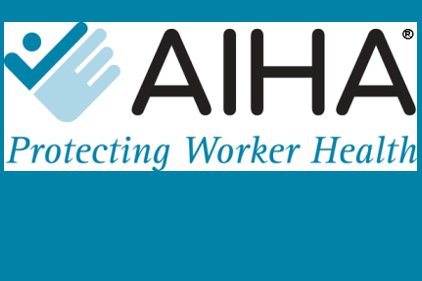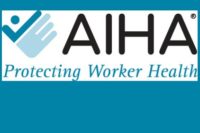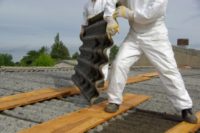NIOSH Docket Office
Robert A. Taft Laboratories
4676 Columbia Parkway
MS C-34
Cincinnati, OH 45226
RE: CDC-2013-0023; Docket Number NIOSH 240-A
Submission via electronic means
Docket Officer:
The American Industrial Hygiene Association (AIHA) expresses its appreciation to the National Institute for Occupational Safety and Health (NIOSH) for the opportunity to comment on the NIOSH Draft Current Intelligence Bulletin “Update of NIOSH Carcinogen Classification and Target Risk Level Policy for Chemical Hazards in the Workplace.” The Notice of Draft Document was published in the Federal Register on November 15, 2013, Volume 78, No. 221, Page 68849.
AIHA is the premier association serving the needs of professionals practicing industrial hygiene in industry, government, labor, academic institutions, and independent organizations. The AIHA mission is to promote healthy and safe working environments by advancing the science, principles, practice, and value of industrial hygiene. A healthy workforce is essential to the success of American industry, our economic recovery, and our future position in the global economy.
As stated by NIOSH, the draft document provides an update of the NIOSH Carcinogen Classification and relevant Recommended Exposure Limit (REL) policies. Comments from NIOSH also say that there may be concerns with the limitations in the NIOSH approach to classifying and controlling carcinogens; as well as the fact that existing NIOSH carcinogen policy does not allow for classification on the basis of the magnitude and sufficiency of the scientific evidence. NIOSH requests input on this question and several additional areas.
AIHA Comments on the Proposed Draft
- The new classification policy proposed by NIOSH uses the assessment scheme currently used by the National Toxicology Program (NTP), the Environmental Protection Agency (EPA), and the International Agency for Research on Cancer (IARC). AIHA supports this approach because it will enhance harmonization and will keep NIOSH from the additional cost of time and resources to find an alternate acceptable approach.
- AIHA supports the use of risk based exposure limits (RBOEL) for carcinogens. The chosen benchmark of 1-in-1000 risk over a 45-year working lifetime seems appropriate. Mention is made in the document that this risk is at least an order of magnitude higher than the cancer risk permitted in the United States for the general public. However, what is not mentioned in the document is that, according to the Bureau of Labor Statistics, the risk for accidental death occurring during employment in a working lifetime is slightly higher than 1-in-1000 over the entire U.S. worker population and very much higher for some classifications of workers (e.g., construction workers, commercial fishermen).
What is even more interesting is that these accidental deaths of workers represent actuarial data; that is, this is the portion of workers who actually die as evidenced by historical records. The risk of cancer from exposure to a carcinogen on the other hand is putative and the result of low dose extrapolation of animal data. The extrapolation also assumes that there is a linear dose-response all the way down to exposures that are many orders of magnitude below those tested on animals. It also estimates the occurrence of cancer and not the rate of death from cancer.
Given all of these factors, the criterion outlined by NIOSH for RBOELs for carcinogens seems perfectly reasonable.
- Again addressing the target risk for carcinogen RELs, the document refers to mathematical models with varying assumptions. There are a number of these. Which ones will be employed for consistency purposes? Should they be listed or criteria defined?
- AIHA supports the decision to make the RELs risk-based; that is, NIOSH will no longer consider the technical achievability (i.e., ability to control exposure) in establishing these limits.
In addition, NIOSH efforts to ensure that the carcinogen and related REL policies reflect current scientific and risk management practices are very good. This policy:
Ø Eliminates the term “potential occupational carcinogen” as it relates to known carcinogens (asbestos, benzene and cadmium);
Ø Addresses “to the extent feasible”, projecting not only a no-effect exposure, but also exposure levels at which there may be no residual risks;
Ø Addresses how to establish an appropriate level of risk, 1-in-1000;
Ø Is now health-based alone vs integrating technical achievability as it did in some previous cases;
Ø Provides a note as to whether existing controls are effective or available, including risk management practices to reduce worker exposure. One question relating to this – Does NIOSH have the internal capability to answer this question?
Ø Aligns classifications which existed under various umbrellas, advancing a unitary approach – NTP, EPA, IARC and GHS.
While mention is made of hazard banding, AIHA does not believe the document goes far enough. The concept of a hierarchy of Occupational Exposure Limits (OELs), a suite of tools, needs to be incorporated into this document. The landscape has changed in terms of tools being used – this document should reflect this change.
AIHA believes the document is incorrect in one area of the proposal; namely, the treatment of RELs set when the reliable quantification limit is higher than an REL set using the criteria previously cited. Here NIOSH is proposing using a higher REL with an AF notation for Analytical Feasibility. This policy implicitly ignores the ability of modern exposure science to estimate exposures in essentially any scenario by physical-chemical modeling. AIHA suggests having two RELs in this instance. The first would be the standard REL using the criteria previously cited and the second an REL-AF to reflect the analytic realities.
Conclusion
NIOSH, as well as several other government agencies, provides research and recommendations to protect workers from workplace hazards. As an organization, AIHA’s members and goals focus on preventing occupational illness and injury as a fundamental principle of the industrial hygiene field. AIHA also develops science-based public policy and practice through collaboration across scientific and technical communities, and works to ensure that safe and healthy environments are provided for all workers and communities.
In the end, the question that must be answered is “will these proposed changes be better or worse for employee health and safety?” To this, AIHA believes the answer is a resounding “yes,” and AIHA supports NIOSH efforts to move forward.
AIHA appreciates the opportunity to work with NIOSH to help achieve the mutual goal of protecting American workers from exposure to workplace hazards. As the institute moves forward, the AIHA offers its breadth of experience as a resource and we look forward to further opportunities to work with the institute on this and similar issues.
If AIHA can be of any further assistance, please contact me. Thank you.
Sincerely,
Barbara J. Dawson, CIH, CSP
AIHA President
cc: AIHA Board of Directors
Peter O’Neil, AIHA Executive Director


